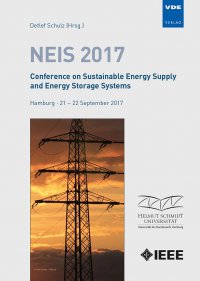Simulating and Testing Heat Pumps’ Contribution to Demand Response in Germany
Conference: NEIS 2017 - Conference on Sustainable Energy Supply and Energy Storage Systems
09/21/2017 - 09/22/2017 at Hamburg, Deutschland
Proceedings: NEIS 2017
Pages: 5Language: englishTyp: PDF
Personal VDE Members are entitled to a 10% discount on this title
Authors:
Eicker, Ursula; Brennenstuhl, Marcus; Yadack, Malcolm; Boch, Pirmin (Stuttgart University of Applied Sciences, Stuttgart, Germany)
Abstract:
The technological challenges of adapting energy systems to more renewables are intricately interrelated with the ways in which markets incentivize their development and deployment. Households with own onsite distributed generation, augmented by electrical and thermal storage capacities (prosumers), can adjust energy use based on the current needs of the electricity grid. Heat pumps, as an established technology for increasing energy efficiency, are increasingly being discussed as having potential for shifting electricity use and contributing to demand response (DR). A full physical model was developed and validated with monitoring data of households from a highly energy efficient neighbourhood in southern Germany. The model was used to test the both physical and financial viability of utilizing a group of household heat pumps to 1) participate in real-time pricing (RTP) tariffs, and 2) to provide flexible power on the secondary reserve market (automatic frequency restoration reserve – aFRR). Our results show that when marketing flexible power use from the heat pumps as aFRR reserve power, up to 48 % of the heating demand of the household can be generated by electricity obtained from aFRR. The modelled household was, however, only able to reduce total yearly electricity costs by approx. 60 EUR (not accounting for costs for control, operational costs, and transaction costs). Significantly, this scenario does not greatly decrease the fraction of locally generated PV energy used onsite (36 % own-use of PV without aFRR market participation vs. 34 % own-use of PV with aFRR participation). The relatively high degree of flexibility necessary for the heat pumps to participate in aFRR activations could be provided, but questions of the reduced lifetimes and increased maintenance costs to the heat pumps require further analysis. The volatile activation of the heat pumps in the simulation did result in efficiency losses, translating into an 11 % increase in heat pump electricity use compared to the base scenario. Our work points to further needs for studying the role of heat pumps in flexibility markets and points to further research questions concerning the aggregation of local clusters of such flexible technologies.


